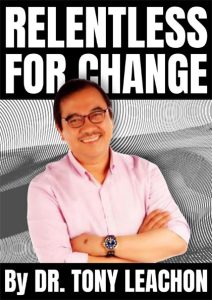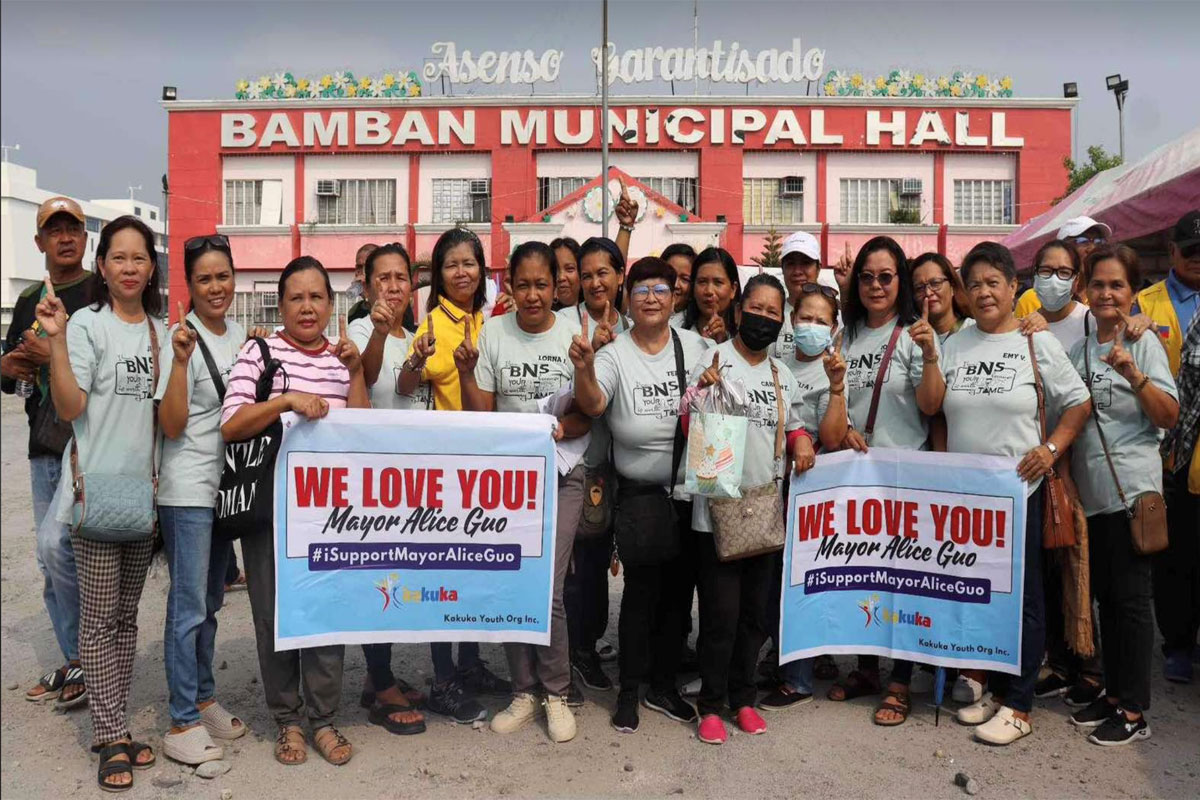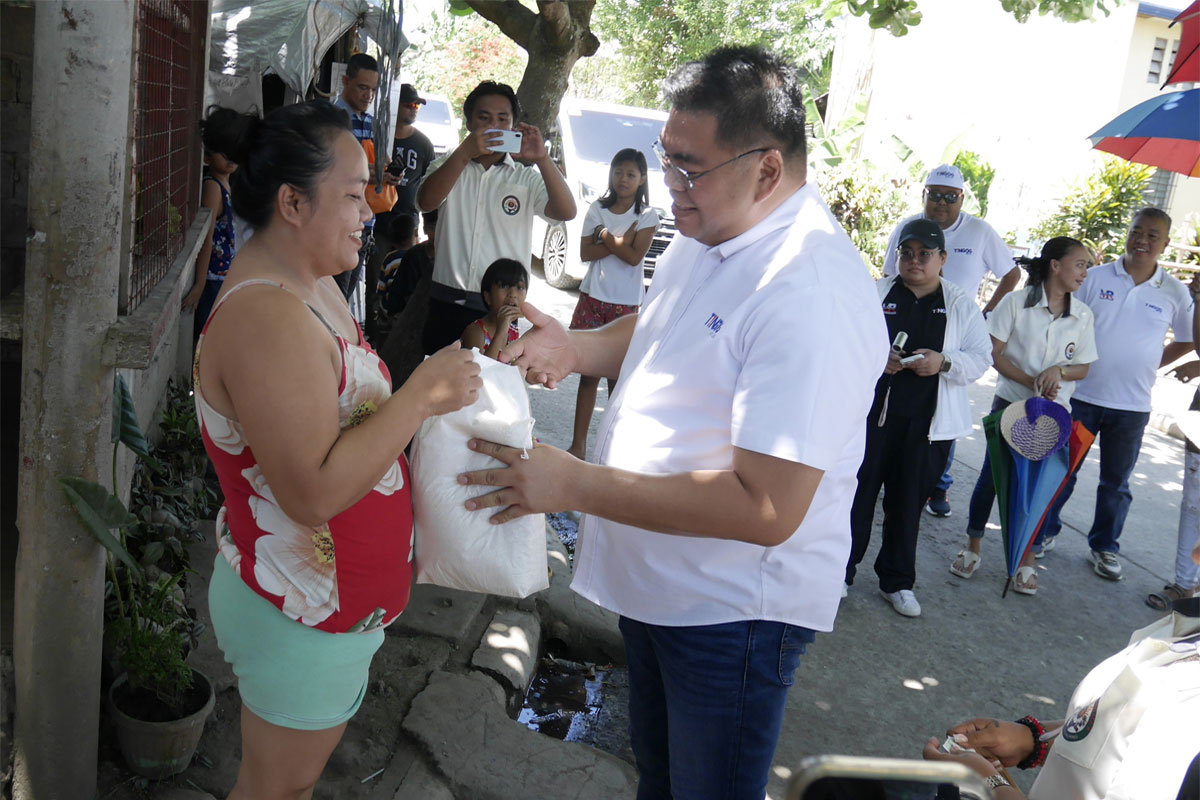
Philippine healthcare needs a massive reset
 ABOUT half of Filipinos do not have timely access to primary healthcare facilities. In 2020, only 50 percent of Filipinos were able to access primary health care within the standard time frame set by the government, which is 30 minutes. (Reference : Philippine Institute for Development Studies (PIDS).
ABOUT half of Filipinos do not have timely access to primary healthcare facilities. In 2020, only 50 percent of Filipinos were able to access primary health care within the standard time frame set by the government, which is 30 minutes. (Reference : Philippine Institute for Development Studies (PIDS).
Cardiovascular diseases, such as heart failure or heart attacks, as well as cancer, are the two leading causes of death in the Philippines. 17% of all deaths of Filipinos every year are due to some cardiovascular-related causes. Obesity is a growing public health problem in the country now with 27 million Filipinos afflicted with this malady. Obesity leads to a host of medical problems like diabetes , coronary artery disease , strokes , kidney failure , cancers and osteoarthritis.
In 2017, the Philippines ranked 60th out of 191 countries in the World Health Organization’s Ranking of the World’s Health System. About half of Filipinos do not have timely access to primary healthcare facilities. In 2020, only 50 percent of Filipinos were able to access primary health care within the standard time frame set by the government, which is 30 minutes.
According to a survey between July 2021 and June 2022, 38.6 percent of adults aged 20 and 59 in the Philippines were diagnosed as obese or overweight. Obesity increases the risk for severe diseases and health conditions such as hypertension, stroke, and type 2 diabetes.
Around 27 million Filipinos are overweight and obese, based on the latest survey of the Department of Science and Technology’s Food and Nutrition Research Institute. For the past two decades, being overweight and obesity among adults have almost doubled from 20.2% in 1998 to 36.6% in 2019
Behavior change is complicated and complex because it requires a person to disrupt a current habit while simultaneously fostering a new, possibly unfamiliar, set of actions. This process takes time—usually longer than we prefer.
Letting go of our current state is one of the most difficult aspects of any change. A lack of leadership through this necessary step is one reason organizational change fails. The good news is there are things we can do to make letting go easier.
The best time to establish behavior change is during the formative years. It means that the government should integrate preventive health education into the curriculum of both DEPED and CHED. Discipline has to be set up.
Discipline is Destiny
In his book “ Discipline is Destiny “ Ryan Holiday examines the power of discipline through the lens of the ancient Greek philosophy of Stoicism. Holiday argues that your ability to practice discipline—one of the four cardinal virtues of Stoicism—determines how successful you are (aka your destiny). This is because it dictates whether you work consistently and avoid the temptations that prevent you from attaining or maintaining success.
This mantra by author Ryan Holiday will guide the citizens down the path to self-mastery, upon which all the other virtues depend. Discipline is predictive. You cannot succeed without it. When you discipline yourself, you’re essentially training yourself to act in a specific way. Stay with this long enough and it becomes routine—in other words, a habit. So when you see people who look like “disciplined” people, what you’re really seeing is people who’ve trained a handful of habits into their lives.
After World War 2 , the first world Asian countries e.g. Japan and Singapore worked on their health programs to protect their people from illness and build on productive workforce.
Japan ‘s Ikigai system
Emerging from the heart of Japanese culture is the concept of Ikigai, which means “a reason for being,” or even “a reason to get up in the morning.” It’s the idea that a meaningful life is often a longer, healthier, and happier one, as well as creating positive impact for those around us.
Japan, an archipelago nestled in East Asia, is often heralded as a paragon of discipline and order. This reputation is not merely a modern stereotype but is deeply rooted in the country’s history, culture, and everyday practices.
They are proud of what they do, and commit themselves to a self-discipline that is driven by inner strength. From a young age, they are taught to value effort and endurance to achieve their goals, knowing that hard work trumps talent.
The balanced and nourishing makeup of the traditional Japanese diet is praised for its benefits to health and wellness. This diet contains primarily rice, fruits, and vegetables that are naturally low in calories and fat. Rice, a multipurpose food staple, provides the essential carbs for energy.
In contrast to western nations, the Japanese eat a lot of seaweed, fresh vegetables, fermented soy, rice, and seafood. Ample amounts of phytochemicals, vitamins, and minerals undoubtedly make a difference in terms of mortality.
The biggest weakness of Japan ‘s healthcare system is smoking.. One of the biggest public health issues is smoking in Japan, which according to Tadao Kakizoe (honorary president of the National Cancer Center) kills more than 100,000 people per year and is responsible for one in ten deaths.
But overall, Japanese good health can be attributed to factors such as a low obesity rate, a healthy diet, and access to high-quality healthcare. As such, Japan also has a relatively low prevalence of health risks such as tobacco use and obesity, which are major contributors to chronic diseases such as cancer and heart disease.
Singapore: One of the best healthcare systems in the world
Singapore’s healthcare system is also ranked best in the world on the Legatum Prosperity Index by British think tank Legatum Institute. From polyclinics and private practices to general hospitals and specialized facilities such as the National Heart Centre, Singapore’s healthcare quality is superb.
Singapore generally has an efficient and widespread system of healthcare. In 2000, Singapore was ranked 6th in the WHO ranking of the world’s health systems. Bloomberg ranked Singapore’s healthcare system the most efficient in the world in 2014. The Economist Intelligence Unit ranks Singapore 2nd out of 166 countries for health-care outcomes. Bloomberg Global Health Index of 163 countries ranked Singapore the 4th healthiest country in the world and first in Asia.
Singapore has a universal health care system. There are a variety of health screening and healthy lifestyle programmes for both adults and children. Only 14% of the population smokes. The Temasek Cares programme supports a wide range of interventions for disadvantaged people.
While Singapore allocates a modest 4% of its GDP to healthcare spending, its commendable health outcomes stand in stark contrast to the 17% and 10% spent by the US and the UK, respectively.
The shortage of hospitals and surgical equipment are the primary barriers to quality healthcare in the Philippines. Half of the people who live in the Philippines reside in rural areas of the country where there are sometimes no licensed medical doctors and ill-equipped facilities with broken medical devices.
One of the reasons why the Philippines lacks healthcare facilities is because of an insufficient budget for the health sector. FNU stated that the 293.3 billion pesos that were allocated budget for this year’s health sector is relatively not enough to address the health crisis.
These huge gaps include insufficient personnel, limitations in their facilities and equipment, and a lack of internal monitoring for healthcare quality. Policy interventions are needed to address gaps in the readiness of Philippine hospitals to provide high-quality health care. Philippine hospitals face several challenges. One major challenge is the availability of hospital beds, as the country’s rapid population growth has led to a shortage of beds in many regions . Another challenge is the impact of COVID-19 on cancer care delivery, forcing hospitals to rethink how they care for patients .
A World Health Organization (WHO) report showed that the country spends only about 1.5 percent of its gross domestic product on health, which is significantly lower than that of Thailand, Viet Nam, Singapore, and Malaysia.
The country also lacks health human resources. Based on DOH’s health facility survey in 2019, only 90 percent of rural health units or primary healthcare facilities have at least one medical doctor, while a significant number of health facilities do not have a nurse or a midwife.
What’s the game plan ?
Improve hospitals and health facilities nationwide. But this is a slow process.
Employ more health workers (doctors, nurses, and midwives). Migration is the biggest barrier to realize our health goals
Increase PhilHealth enrollment and improve PhilHealth benefits. But we need to fix our information technology
Reduce maternal and infant deaths. This is a pipeline dream.
Reduce non-communicable diseases , top killer diseases in the country
Reduce and prevent cancer cases – now at a very alarming rate
To address these challenges, the government should attract domestic and foreign investments to finance and close the country’s health infrastructure gap in the medium and long term. This can be done by increasing the equity threshold for hospital foreign investments to 100 percent, imposing additional tax breaks for hospital investments, and accelerating investment approvals for health services and medical equipment, among others.
We urge the government to develop and implement a well-thought-out medical tourism program that could bring in revenues to finance the universal health care program.
Personal accountability and responsibility. This will need national leadership to encourage everyone to develop the habits and behavior to change.
But our DOH leadership should revisit their 8 point agenda of they will be able to achieve these goals given limited time and manpower !
On a personal note , we have to do our best to change while we still have a chance. Life is short. You never know when the game, when your body, will be taken away from you.
Health is a state of complete physical, mental and social well-being and not merely the absence of disease or infirmity.– World Health Organization.
Prevention is key to our success now. This can be accomplished by developing good habits and behaviors.
In summary , let me quote Lao Tzu :
“Watch your thoughts, they become your words; watch your words, they become your actions; watch your actions, they become your habits; watch your habits, they become your character; watch your character, it becomes your destiny.”
###
Anthony C. Leachon, M. D.
Independent Health Reform Advocate
Past President ,
Philippine College of Physicians
Department of Internal Medicine
Manila Doctors Hospital





















